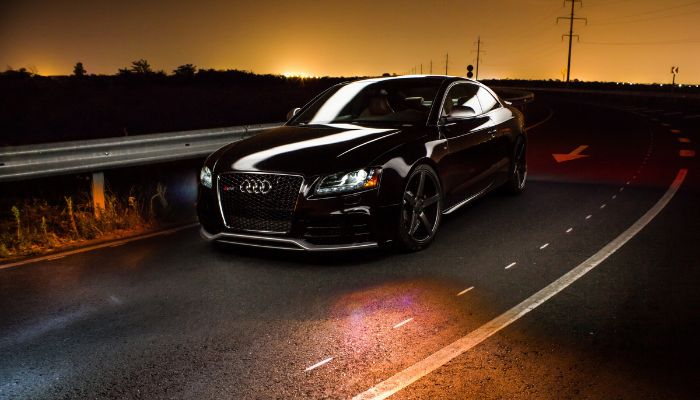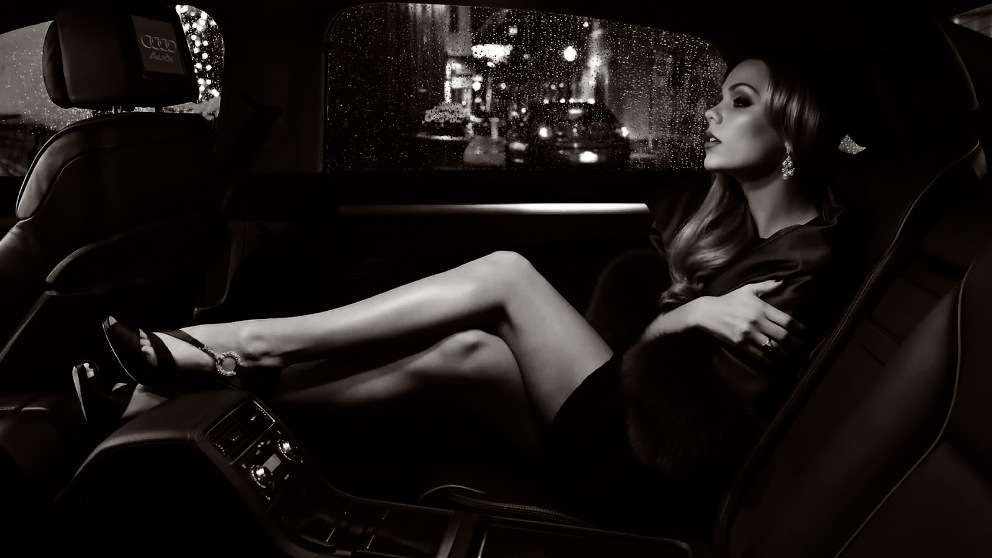
Urban transport has witnessed a significant transformation over the years. From horse-drawn carriages to the iconic yellow cabs and now to sleek luxury vehicles, the journey has been nothing short of remarkable. The constant in this evolution has been the undying spirit to provide convenience and comfort to travelers navigating city landscapes.
The Dawn of Taxis
The concept of taxis dates back centuries. In the 17th century, horse-drawn for-hire hackney carriage services began in both Paris and London. These carriages operated with fixed routes, much like today’s bus systems. It wasn’t until the late 19th and early 20th centuries that the first motorized taxis hit the streets. The iconic yellow cab, which many associate with the New York City landscape, actually began its journey in Paris in the early 1900s.
The Rise of Luxury Car Services
Fast forward to the latter part of the 20th century, the demand for more personalized and luxurious modes of transport started to rise. These were no longer just vehicles that took you from Point A to B, but rather an experience in itself. Luxury car services introduced a promise of comfort, privacy, and a touch of opulence. These vehicles, often driven by professionally-trained chauffeurs, were equipped with top-notch amenities, from leather interiors to advanced entertainment systems. The emergence of companies offering such services marked a significant shift from the notion of mere conveyance to one of luxury travel.
Setting the Stage for Comparison
With two distinct models now prominent in urban landscapes, a comparative analysis becomes imperative. While traditional taxis have their charm and are deeply entrenched in urban folklore, luxury car services offer a fresh perspective on city commuting. This distinction does not merely rest on aesthetics but delves deeper into the realms of comfort, convenience, professionalism, and value. As we navigate through this exploration, we aim to provide insights that will help the upscale traveler make an informed choice for their urban journeys.
First Impressions Matter: Vehicle Presentation and Comfort
It’s often said that the first impression is the last impression. When it comes to transportation, the first thing a passenger notices is the presentation of the vehicle — its exterior aesthetics, the way it’s maintained, and its cleanliness.

But beyond the surface, the true essence of a vehicle lies in its ability to offer comfort, which is derived from its interiors, amenities, and overall ambiance.
Aesthetic Appeal: More Than Just a Pretty Face
The stark contrast between traditional taxis and luxury car services is evident at first glance. Traditional taxis, designed primarily for functionality, often bear the brunt of frequent use and the hustle and bustle of city life. This can sometimes lead to wear and tear that, unless rigorously maintained, can affect the taxi’s aesthetic appeal.
On the other hand, hire luxury car services often feature high-end models from brands known for their design and engineering prowess. These vehicles, from sedans to SUVs, not only exude sophistication but also often undergo meticulous upkeep to ensure they always appear in top-notch condition.
Cleanliness: A Direct Reflection of Service Quality
While all transportation services have a responsibility to maintain cleanliness, the standards can vary widely. Traditional taxis, due to their constant on-the-go nature, might find it challenging to uphold the same level of cleanliness as luxury car services. The latter, with its premium clientele and prices to match, generally ensures a pristine environment, both outside and inside.
Interior Comforts: Where the Journey Becomes an Experience
The moment you step inside a vehicle, you engage with its interiors. Traditional taxis are built for durability and functionality. While they offer basic comforts, they might not go the extra mile in terms of amenities.
Luxury car services, conversely, redefine interior comfort. Plush leather seats that sometimes offer massage functions, ambient lighting, climate control, noise-canceling features, and more space are just the tip of the iceberg. Add to this the availability of on-board Wi-Fi, premium sound systems, refreshments, and sometimes even in-car entertainment options, and you’ve transformed a simple ride into a memorable experience.
Also Read: 8 Best Infotainment Systems Available for Your Car
Safety and Professionalism: Who’s Behind the Wheel?
When booking a ride, whether it’s in a traditional taxi or a luxury car service, passenger safety is paramount. A significant component of that safety is the trustworthiness and competence of the driver.

As the industry has evolved, so too have the standards and expectations surrounding driver vetting, training, and professionalism. Let’s delve into these aspects.
Vetting Processes: Assurance Before the Drive
Traditional Taxi Services: In many cities, taxi drivers must obtain specific licenses to operate. This often involves background checks, driving record evaluations, and sometimes even medical examinations to ensure fitness for the job. However, standards can vary from one jurisdiction to another. While many cities have stringent processes in place, there might be areas where the checks are less thorough due to various reasons, ranging from lax regulations to oversight.
Luxury Car Services: These services often set their own high standards for vetting, given the premium nature of their brand. Background checks are rigorous, and there’s often an added layer of scrutiny, including previous employment verification and, at times, even psychological evaluations. The goal is to ensure the driver is not only competent but also trustworthy, given the clientele they cater to.
Training and Skill Development: Beyond Just Driving
Traditional Taxi Services: While taxi drivers are expected to know their way around the city, their training often centers on driving skills and basic customer service. Given the volume and variety of passengers they encounter daily, there’s less emphasis on personalized service.
Luxury Car Services: Drivers in this segment undergo extensive training, which goes beyond just driving. They are educated about the vehicle’s features, trained in advanced customer service skills, and often equipped with knowledge about the city’s high-end establishments, events, and other interests catering to the upscale traveler. Some luxury services also conduct periodic training sessions to update their drivers on new technologies, vehicles, or service standards.
Attire and Presentation: Reflecting Brand Values
Traditional Taxi Services: While some taxi services have uniforms or a dress code, many allow drivers the flexibility to wear what they deem professional. The emphasis is more on cleanliness and decency rather than high-end presentation.
Luxury Car Services: Appearance matters in the world of luxury services. Drivers are often dressed in crisp uniforms, exuding professionalism. This might range from well-tailored suits to polished shoes, with attention to even the smallest details, like branded ties or badges, all reflecting the luxury brand’s values.
User’s Peace of Mind: The Ultimate Deliverable
No matter the service type, the ultimate goal is to ensure the passenger feels safe and at ease. While traditional taxi services rely on their longstanding presence and city regulations for trust, luxury car services emphasize personalized experiences, rigorous vetting, and impeccable presentation to ensure users’ peace of mind.
Convenience and Technology: Seamless Travel Experiences
In today’s fast-paced world, convenience is paramount, and technology plays a pivotal role in enhancing this aspect of our lives.

The transport sector, especially taxi and luxury car services, has not remained untouched by this tech revolution. From the way we book our rides to the amenities we enjoy during the journey, technology has reshaped the travel experience.
Booking Methods: Click, Tap, or Wave?
Traditional Taxis: The iconic image of a person waving down a taxi on a busy street corner is one many of us are familiar with. This traditional method of hailing a taxi is still prevalent in many parts of the world. Additionally, some taxi services have evolved to include phone booking systems, and in recent years, a few have integrated mobile apps to stay competitive.
Luxury Car Services: Technology is at the heart of most luxury car services. Booking a ride is often as simple as a few taps on a smartphone app or clicks on a website. These platforms offer a slew of features like scheduling rides in advance, choosing the type of vehicle, and even selecting preferred amenities. Real-time tracking, estimated time of arrival, and cashless payments further add to the convenience.
In-Car Technology: Making Journeys Interactive
Traditional Taxis: In-car tech in traditional taxis usually revolves around basic functionalities. Passengers might find a meter displaying the fare, a radio, and in some advanced taxis, a card payment system. While some taxis in tech-forward cities have integrated screens for entertainment or navigation, they’re not as widespread.
Luxury Car Services: Stepping into a luxury car service can sometimes feel like entering a mini tech hub. Wi-Fi connectivity ensures passengers remain online, crucial for business travelers or those who wish to stay entertained. Charging ports, compatible with various devices, ensure gadgets remain juiced up. High-end sound systems offer a premium auditory experience, and screens might offer entertainment options or real-time interactive maps, allowing passengers to track their journey. Some luxury cars even offer tablet-based controls, enabling passengers to adjust seating, lighting, or even communicate with the driver without saying a word.
Cost vs. Value: Understanding the Return on Investment
One of the most significant deliberations for many travelers, whether frequent or occasional, is deciphering the balance between cost and value. While a price tag can be a straightforward indicator, value often delves into the intangibles, the nuances, and the overall experience. Here, we dissect the pricing structures of traditional taxis and luxury car services and attempt to understand the deeper value propositions of each.
Breaking Down the Pricing Structures
Traditional Taxis:
- Meter-Based System: Most traditional taxis operate on a meter-based system where the fare is calculated based on distance traveled and, in some cases, the time taken (especially during traffic standstills). This system offers transparency, as passengers can see the fare increasing in real-time.
- Flat Rates: Some taxi services, especially those operating from airports or for specific routes, might offer flat rates. This provides predictability, ensuring passengers know the cost upfront.
- Additional Costs: Factors like night charges, baggage fees, or additional passenger charges might also be applicable, depending on the region and taxi service policies.
Luxury Car Services:
- Preset Pricing: Luxury services often provide an upfront price based on the chosen vehicle type, distance, and desired amenities. This ensures there are no surprises at the journey’s end.
- Membership or Subscription Models: To cater to frequent travelers or corporate clients, some luxury services offer subscription or membership models, providing a set number of rides for a monthly or yearly fee.
- Peak Pricing: During high-demand times or events, luxury services might employ dynamic pricing, increasing costs. However, even in such cases, passengers are typically notified of the price before booking.
The Intangibles: Beyond the Dollar Value
Traditional Taxis:
- Convenience of Availability: One of the biggest assets of traditional taxis is their wide availability in busy areas, allowing for impromptu hailing. This spontaneity often holds value for those in a hurry or without specific plans.
Luxury Car Services:
- Premium Experience: With luxury car services, passengers aren’t just paying for a ride—they’re investing in an experience. The immaculate interiors, advanced in-car tech, and bespoke amenities elevate the journey.
- Professionalism and Personalization: Trained chauffeurs, often well-versed in the city’s layout, culture, and high-end establishments, add a touch of personalization to the journey. Their professionalism, coupled with the service’s reliability and punctuality, enhances the overall experience.
- Peace of Mind: Knowing that the vehicles undergo regular maintenance, drivers are vetted meticulously, and the entire service operates under stringent quality standards, provides passengers with peace of mind, an intangible but invaluable asset.
Conclusion: The Verdict for the Upscale Traveler
Navigating the bustling streets of urban landscapes, travelers today are presented with a plethora of choices for their transit needs. Traditional taxis and luxury black car services, both rooted in the same principle of providing transportation, offer distinctly different experiences. For the upscale traveler, the decision often boils down to weighing the tangible benefits against the intangibles, the cost against the value, and immediate convenience against a holistic experience. Let’s encapsulate our exploration:
Pros and Cons: At a Glance
Traditional Taxis:
- Pros:
- Immediate Availability: Often easy to hail in busy areas without prior planning.
- Predictable Pricing: Meter-based system ensures transparency in pricing.
- No Frills: Quick, no-nonsense transportation, especially for short distances.
- Cons:
- Variable Quality: Vehicle and driver standards can fluctuate significantly.
- Lack of Amenities: Basic interiors with limited, if any, advanced tech or comfort features.
- Unpredictability: Waiting times, vehicle condition, and driver professionalism can be hit-or-miss.
Luxury Car Services:
- Pros:
- Premium Experience: Impeccable interiors, advanced in-car tech, and curated amenities.
- Professionalism: Highly trained drivers, reliable service, and punctuality.
- Peace of Mind: Rigorous standards for vehicle maintenance, driver vetting, and overall service quality.
- Transparent and Diverse Pricing: Upfront pricing with options for memberships or subscriptions.
- Cons:
- Higher Costs: Premium services come with a premium price tag.
- Requires Planning: Spontaneous availability might be limited compared to traditional taxis.
- Dynamic Pricing: Prices can surge during high-demand times.
Making an Informed Choice
For the upscale traveler, the decision between traditional taxis and luxury car services isn’t merely about getting from point A to B. It’s about the journey, the experience, and the statement one wishes to make. While traditional taxis offer a practical solution for quick transits, luxury car services adventure promise an elevated experience, encapsulating comfort, professionalism, and a touch of luxury.
However, the ultimate verdict hinges on individual preferences and priorities. If immediate availability and cost-effectiveness rank high, traditional taxis might be the go-to choice. Conversely, for those who value comfort, professionalism, and an experience steeped in luxury, the scales tip in favor of luxury car services.
In the grand scheme of urban transportation, both services have their niche. The upscale traveler’s challenge (or perhaps, delight) lies in choosing a service that aligns seamlessly with their needs, desires, and the statement they wish to make with their transit choices.







